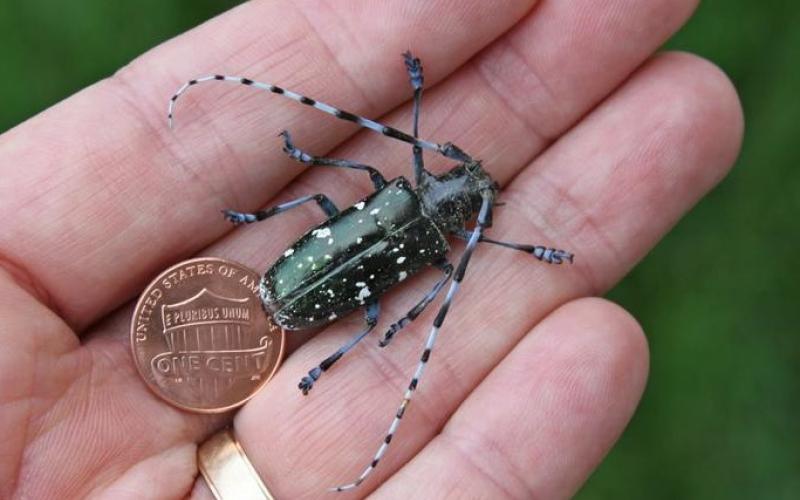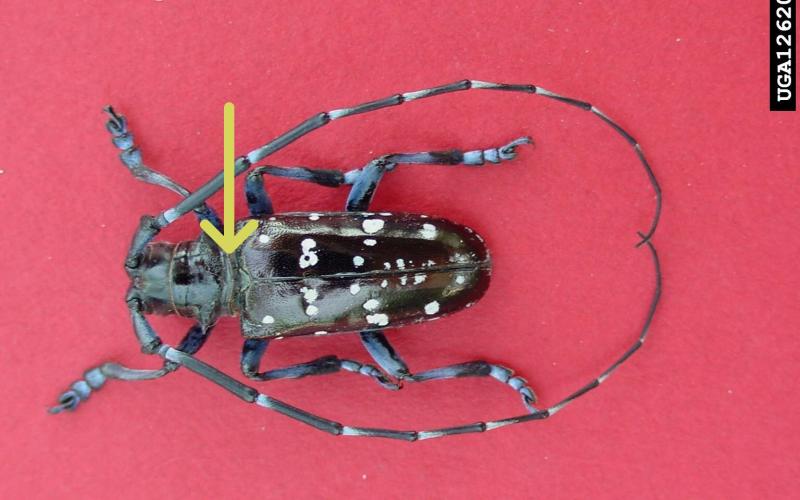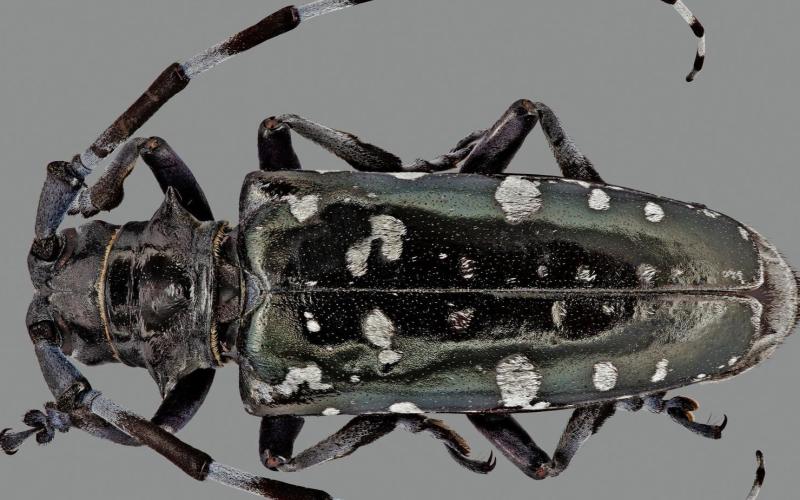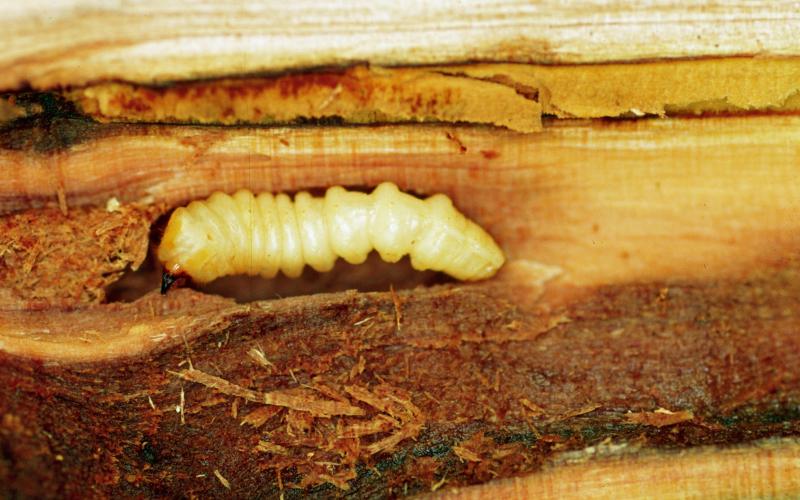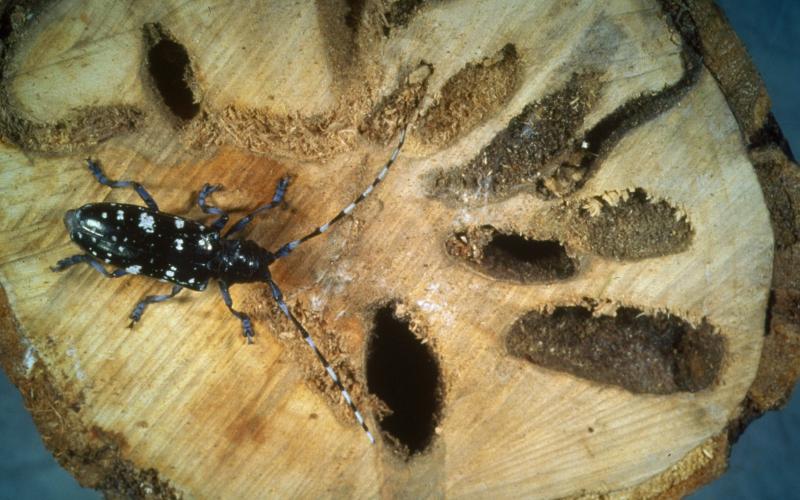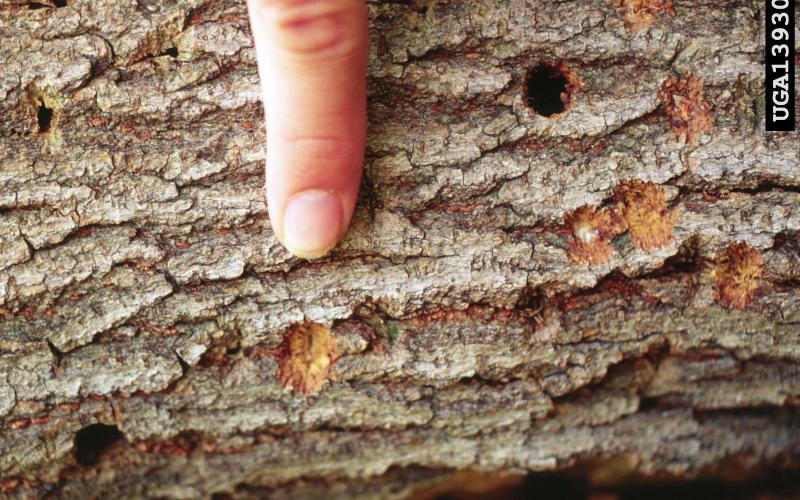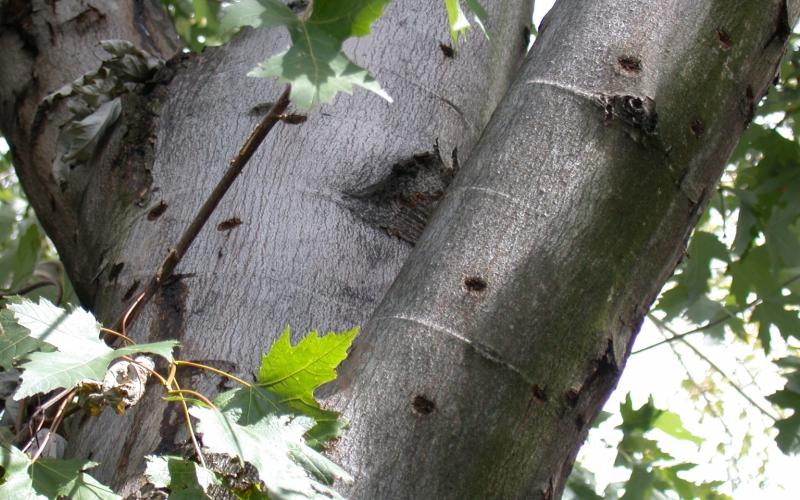Scientific name: Anoplophora glabripennis (Motschulsky)
Native range: Eastern China, Japan, and Korea
At Risk
The Asian longhorned beetle (ALB) is a serious pest with a broad host range. In North America, maple, boxelder, willow, elm, horse chestnut, buckeye and birch are documented as very good hosts. Other trees such as hackberry, ash, poplar, and mountain ash are considered possible hosts, along with some trees not commonly found in Minnesota.
In its native range, ALB is most commonly found on poplar and is considered a minor to occasional pest. Trees in North America eventually die due to heavy tunneling by the larvae.
New infestations are typically caused by moving infested wood to new places, where the beetles exit the wood and infest nearby trees. Asian longhorned beetle is a federally regulated pest due to the severe economic and environmental impacts it causes.
When ALB has been found in new areas, federal quarantine and eradication programs have been initiated. These are serious measures but are preferable to the long-term impacts of an unchecked ALB infestation.
History
The Asian longhorned beetle is native to eastern Asia. The first ALB infested trees in North America were found in Brooklyn, NY, in 1996. Since then, ALB has also been found elsewhere in New York City, as well as in New Jersey and Long Island.
ALB was also discovered in Chicago, IL in 1998; Toronto, ON in 2003; Worcester, MA in 2008; Boston, MA in 2010; and Bethel, OH in 2011. In each location, eradication strategies have been implemented. In Chicago, the strategy has been effective, and ALB was declared eradicated in 2008.
This pest has never been found in Minnesota.
Biology
Adult Asian longhorned beetle are present during the summer and feed on leaves and twigs of host trees. After mating, females chew egg niches (shallow pits) in the bark of live trees, laying an egg in each niche. After hatching, larvae tunnel under the bark and later deep into the wood as they mature. Larvae overwinter inside the tree and may remain there for one to two years. In spring or early summer, larvae will pupate into adults and exit the tree, restarting the cycle.
Identification
Adult Asian longhorned beetle are fairly recognizable with their large size, long antennae and distinct coloration (black with up to 20 distinct but irregularly shaped white spots). However, there is a native insect in Minnesota, the white-spotted sawyer (Monochamus scutellatus), that may be mistaken for ALB. The difference is a distinct white spot just behind the pronotum (area behind the head) of the sawyer – this white spot is not found on the ALB. Additionally, spots on the wing covers of sawyers are less distinct than those on ALB.
When ALB adults exit trees, they create dime-sized, perfectly round holes. Other wood-boring insects may create similar holes, but these are usually found in dead or dying trees. Exit holes in live trees are a stronger indication of ALB presence.
Female ALB beetles also create oval-shaped egg niches, roughly the size of a dime. Since ALB attacks live trees, sap may weep from the bark beneath egg sites. Larvae are not visible, as they live within the tree. As they tunnel in trees, they expel sawdust from the galleries, which may be visible on the upper sides of branches or at the base of the tree.
Selected References:
- Dodds K and Orwig D. (2011). An invasive urban forest pest invades natural environments: Asian longhorned beetle in northeastern U.S. hardwood forests. Canadian Journal of Forest Resources, 41:1729-1742.
- Hu J., Angeli S, Schuez S, Luo Y and Hajek A. (2009). Ecology and management of exotic and endemic Asian longhorned beetle Anoplophoa glabripennis. Agricultural and Forest Entomology, 11: 359-375.
- Asian Longhorned Beetle – UVM Entomology Research Laboratory.
If you suspect you have seen Asian longhorned beetle, please contact the MDA via email at reportapest@state.mn.us
Smarty Plants Podcast
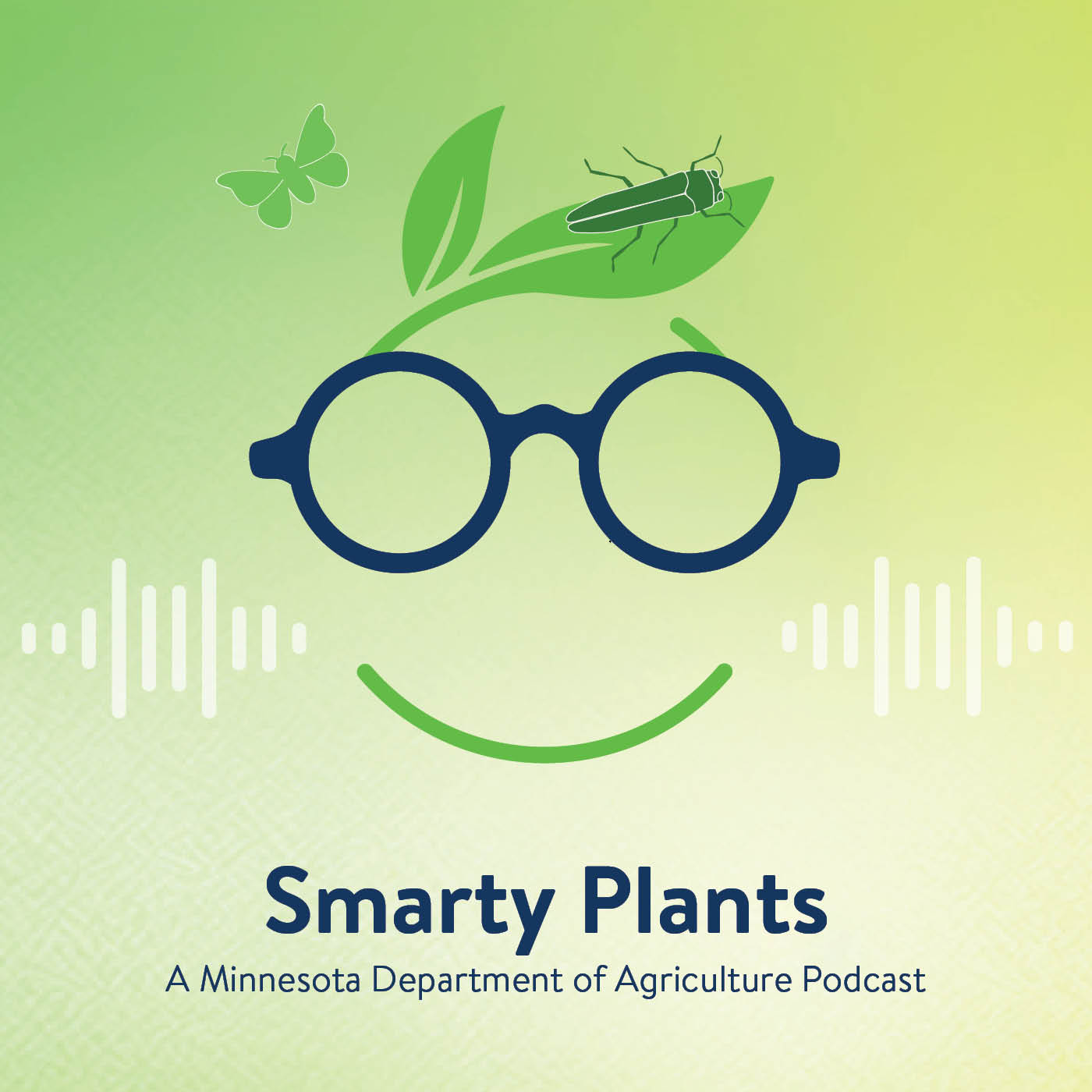 Discover Smarty Plants, the Minnesota Department of Agriculture's podcast that digs into the fascinating world of invasive species. Join expert guests as they share insights and solutions to protect our environment and agricultural resources. Visit Smarty Plants and start listening today.
Discover Smarty Plants, the Minnesota Department of Agriculture's podcast that digs into the fascinating world of invasive species. Join expert guests as they share insights and solutions to protect our environment and agricultural resources. Visit Smarty Plants and start listening today.
